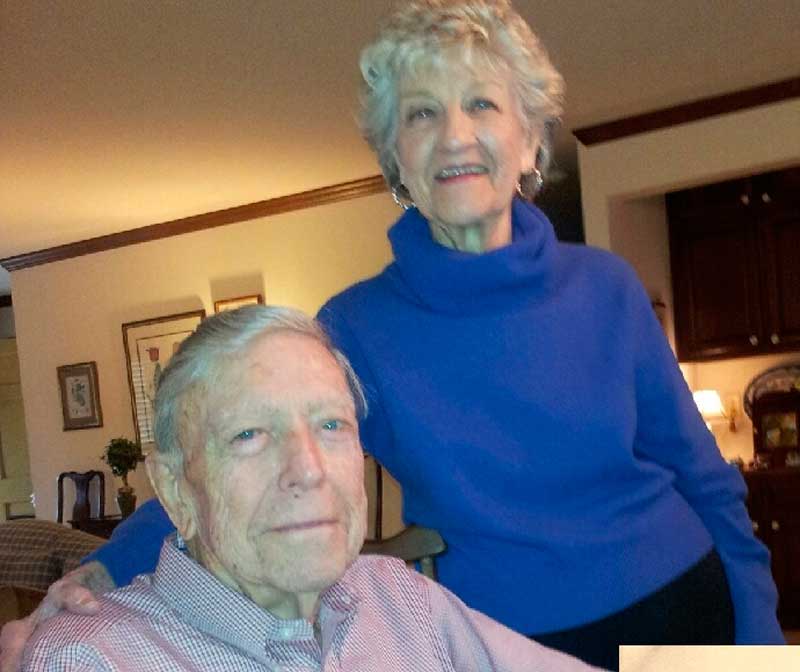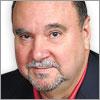Sometimes we search for a connection to history and don’t recognize the people around us right here in Fayette County who played a key role. And as Sam Lunsford will tell you, even though he will be 88 years old in April, the memories of combat when he was just 20 years old never fade. They remain just as fresh as yesterday still.
When Sam graduated from Tech High in Atlanta in 1943, WWII was raging and the draft hung over his head. He enlisted in the Air Force and went through a series of training programs in Florida, Colorado, Texas and Georgia to become an armament engineer. Sam was assigned to a B-17 Flying Fortress crew as a waist gunner but would end up playing a different role.
Sam’s crew ferried a B-17 from Savannah through Manchester, N.H.; Goose Bay Labrador; Iceland; Wales; Stone, England; and finally arrived at Thorpe Abbott, an English RAF base, to join the American 100th Bomb Group, called the Bloody Hundredth because of the horrendous casualties they suffered.
Sam’s unit may have been the most famous heavy bomb group in WWII and was the subject of the 1949 movie “Twelve O’Clock High” starring Gregory Peck.
The missions Sam flew to bomb Germany were extremely dangerous and many never made it through their quota of 25 missions.
The B-17s flew in close formation to focus their bombs on selected targets. When they hit the IP (initial point) they were preparing to release bombs and had to keep their flight steady despite the danger of anti-aircraft flak that seemed heavy enough to walk on.
Sam flew in the bombardier’s seat in the nose of the aircraft. The bombardiers had been removed from all but the lead bombers, and as the togglier, Sam’s job was first to climb down to the bomb bay and straddle the racks of bombs, usually 500 pounders, and pull the safety pins. Then back in his seat in the nose, all aircraft opened their bomb bay doors on signal from lead, then Sam would follow the lead’s drop after a set interval and either salvo all bombs at once or use an intervalometer to set the bombs to impact 25 or 50 or 100 or more feet apart.
At altitudes of 25-30,000 feet, temperatures were 40-50 degrees below zero and the flight crew wore heated flight suits and foot covers, but were always advised to keep their boots handy in case they ever had to bail out. They had a flack jacket and Sam carried two extras to sit on to protect tender areas from shrapnel.
Sam survived 24 missions, and on number 25 he was reminded of the role of fighter pilots on both sides. When the German fighters attacked, the flak would stop while the much faster ME-109s zipped to and fro doing their best with machine guns to kill some bombers. American P-51s were their defenders and Sam thought there must be no finer aircraft than a P-51.
On April 7, 1945, it was an ME-109 that hit their number three engine and fuel tank on mission number 25 after they had dropped bombs and taken their evasive turn, heading home to England but still over Germany. Sitting in the nose Sam couldn’t see where they were hit but he did call the pilot’s attention to a B-17 above them on fire. Another crew member responded, “Don’t worry about them, we’re on fire, too!”
The pilot tried to make it home but by the time they overflew Olson, Germany, maybe 300 miles from home base, the plane was filling up with smoke and the pilot knew they had to abandon the airplane.
When he gave the order, likely after losing altitude to get down to the 10,000 feet breathable air level, Sam and the navigator were together in the nose and had a small square hatch for their exit, but it was frozen shut, the engineer having relieved himself on that hatch.
Sam’s kicks finally jarred it loose and he just rolled out in his first ever parachute jump, but not before grabbing his boots, securely tied together at the strings for easy handling.
The only parachute training he had was to pull the ripcord on his chest pack, which he did, and when his chute billowed open, the tail of his aircraft sped by and he was enveloped by the most surprising quiet on his way down after the incessant noise inside the aircraft.
As Sam neared the ground near a railroad station, German Luftwaffe soldiers and civilians rushed toward his landing area, but scattered when one of Sam’s angels, a P-51 pilot, circled and feigned a gun run at the crowd. But that pilot could only do so much, and as he left when Sam was about 50 feet off the ground, he dipped his wings and gave Sam a wave; Sam found himself wishing somehow he could get himself into that cockpit.
Upon landing in a large open area, the wind pulled him around for a while during which he lost his boots. When he finally got his parachute collapsed, he set out to recover his boots while Germans shouted, “Halt! Halt!” but fortunately did not shoot. Sam considered himself fortunate to have his boots, as he would find many POWs did not, and if they ever escaped boots would be essential.
Sam would learn years later that three of his crew, the tail gunner, radio operator and the ball turret gunner, were all killed after they landed, murdered.
The Germans took Sam to a tombstone dealer who spoke perfect English. The man had an Opal automobile, but gas was very scarce, and he had a setup in the trunk to burn a fire in a pot, and the fumes from that fire ran the Opal’s engine. They drove Sam and others, with their parachutes in the trailer. German women would declare “Nice!” when they felt the parachute silk between their fingers.
They arrived at a holding facility and were placed in solitary confinement for a week, very dispiriting. Then followed interrogations, but Sam only gave up the prescribed name, rank and serial number. He was released into a huge long building’s attic area of a full of hay, and when Sam recounts being together again with his surviving crew members – the pilot, co-pilot, navigator and waist gunner — he is overcome with memories that cannot be adequately recounted in words.
The Germans put them on a train heading to POW camp Stalag Luft 1 at Barth, on the Baltic Sea. On the way the train had to stop to avoid allied bombs on a local city.
Sam says the Germans were not treating POWs badly by then; they apparently saw the end of the war coming in the defeat of Germany. The Germans even posted news of the shifting battle lines and left the POWs alone other than daily formations for headcount.
The POW undercover operation was sufficiently advanced to provide Sam with a suit of civilian clothes, and a passport, just in case he found a way to escape. There was never enough to eat, and Sam says the Germans were hungry, too.
They were fed a grain that looked like oatmeal, and there were Red Cross parcels with Vienna sausage, dark chocolate, cigarettes and other things, but the Germans stole many of the packets.
They brought in a horse wagon of moldy potatoes, dumped them on the ground for the POWs to forage among the spoiled ones for edible pieces. The Germans also provided some black bread that wasn’t too bad with some so-called butter for a snack.
When the Russians were closing in, the Germans scurried away, taking all the Red Cross parcels with them. The Russians liberated the camp, which held about 9,000 allied POWs.
The war was over, but Sam and the others remained in the camp until arrangements could be made to get them home. Sam found himself one day walking near the Baltic and came across the bodies of an old man, an old woman, a younger woman and a child, all dead from shots to the head. He never knew whether they were murdered or committed suicide under pressure of dreadful conditions, but that sight is never far from his thoughts.
The British POWs were taken directly to England, while the Americans were flown to LeHarve, France on B-17s, the interior white with DDT, Sam guesses because of all the contamination they expected unclean POWs to bring. In LeHarve they were fed generously. Sam’s trip home from France to Newport News, Virginia was on a ship with few comforts, leaving Sam with a miserable memory of illness during a terrible storm.
Sam was discharged in October 1945. He and June married in 1947. Much to his dismay, Sam’s reserve unit was activated again during the Korean war, but his service then was not quite so dangerous.
These days Sam isn’t moving too fast, using a walker with hands no longer steady and too many doctors’ appointments.
But impatient youngsters in a hurry to get around a slower old man might catch themselves if they only knew, take a moment to shake his hand and say quietly, “Thank you for serving our country!”
Well, maybe not, but they should.
[Terry Garlock of Peachtree City occasionally contributes a column to The Citizen. His email is [email protected].]












Leave a Comment
You must be logged in to post a comment.